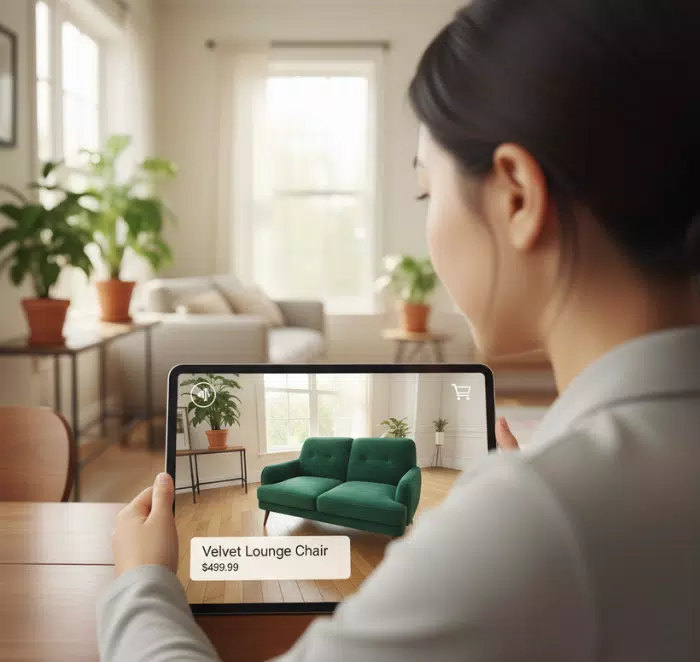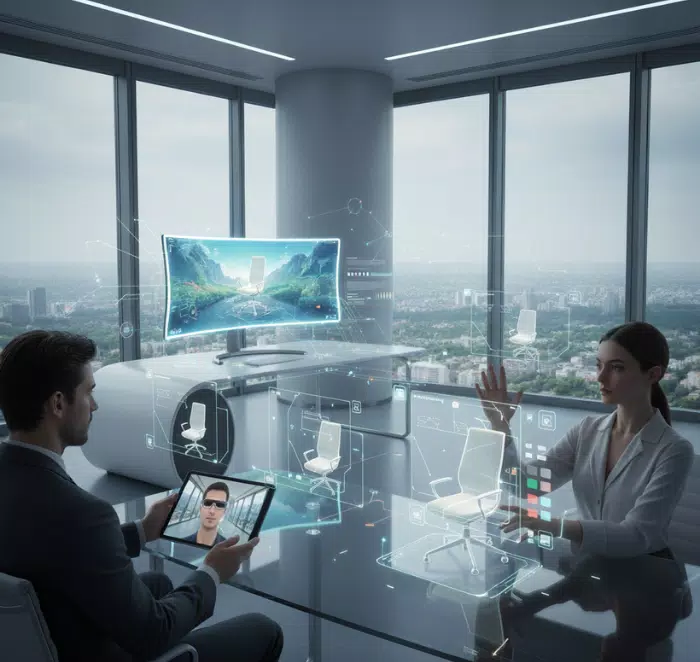Augmented reality platform


Real-time interaction and tracking


Augmented reality overlay
Cross-platform compatibility

Frequently asked questions
Augmented reality technology helps online sellers and businesses provide their customers with a realistic visualization of the product by using 3D models and AR overlays to display digital information, including 3D models, graphics, and text, onto the real-world environment. Brands can use this technology with the help of several components, such as cameras, sensors, and computer processors, so that they can capture the physical world, process the data, and superimpose digital content accurately to provide users with a real-time and engaging online shopping experience.
Augmented reality provides customers with an engaging and interactive online shopping experience by enhancing the real world by adding digital elements through devices like smartphones, tablets, and optical see-through glasses. On the other hand, virtual reality creates a completely immersive, simulated environment, shutting out the physical world, and requires a dedicated headset, which will provide users with a virtual experience of products during online shopping.
To provide your customers with an interactive shopping experience, it is important to integrate the augmented reality technology with the e-commerce platform in a seamless and efficient way, which will help you get more user engagement and higher conversion rates. Therefore, to build the AR platform, there are some technical requirements that need to be fulfilled by the brand, such as sensors, a display, a game engine, an SDK or API, and programming skills, which will offer customers an engaging way to interact with products using 3D models and AR overlays.
Online sellers and brands can provide their customers with engaging and interactive shopping experiences by integrating AR technology in different formats, including marker-based AR, markerless AR, and superimposition AR. It will also help businesses to provide their customers with a similar experience on various platforms, regardless of the time zone and geographical location. There are three different types of AR platforms that brands can use to provide their customers with an immersive experience; here is some brief information about the same: Marker-based AR: It uses a specific image or object, such as a QR code or product image, to recognize the appearance of digital content and help users get an AR overlay of the product to provide them with an engaging way to understand the detailing of the item virtually. Markerless AR: It provides users with an AR experience without the need for a marker because it uses the device's sensors, including the camera and GPS, to understand the environment and place virtual objects. Superimposition AR: It provides users with an interactive experience by replacing the real-world object partially or fully to provide users with a real-world object's view with an augmented version of the product during virtual try-on.
Online sellers and businesses can use augmented reality platforms for multiple purposes, such as providing interactive product visualizations, offering immersive, risk-free training simulations for complex or hazardous tasks, allowing remote experts to place digital annotations, and creating engaging and shareable experiences to build brand awareness and drive sales, helping them to increase their audience reach and boost overall revenue.
Yes, online sellers and businesses can create augmented reality-based content with minimal coding experience, which can be done using software development kits (SDKs), helping companies to provide their customers with AR platforms and tools. Some SDK providers, such as GlamAR, provide online sellers and companies with user-friendly interfaces or customization options that will allow them to create basic AR experiences without extensive programming knowledge while helping them to maintain their image and identity throughout the platform to provide their customers with a similar experience.
















